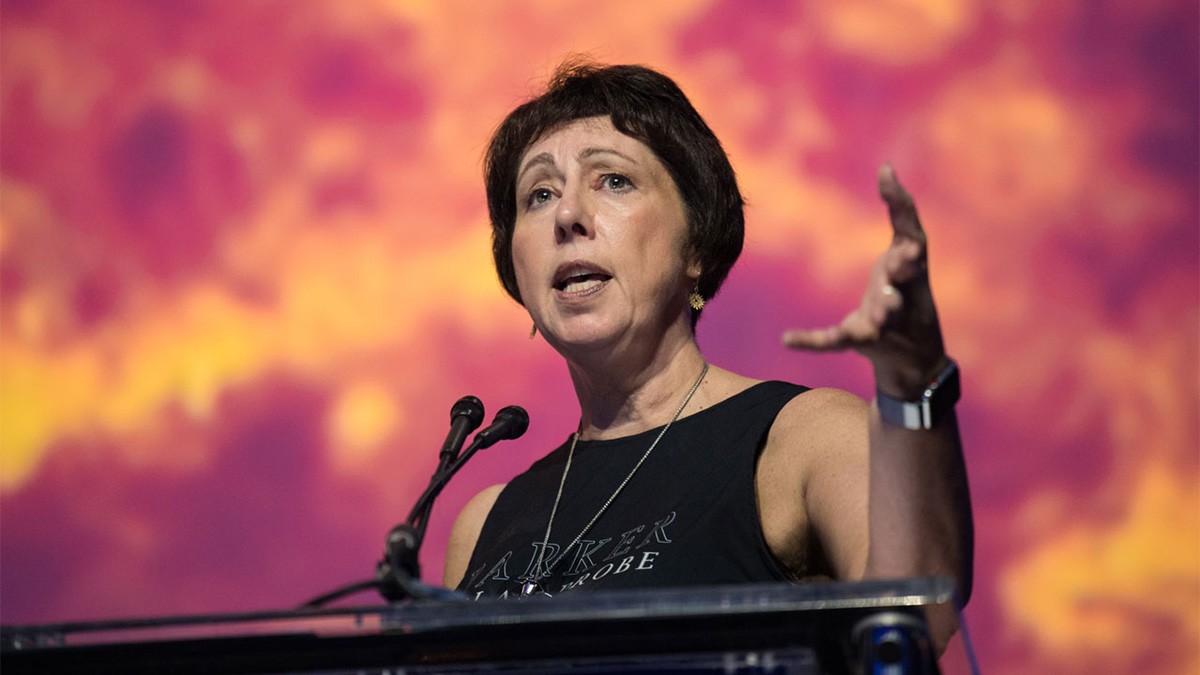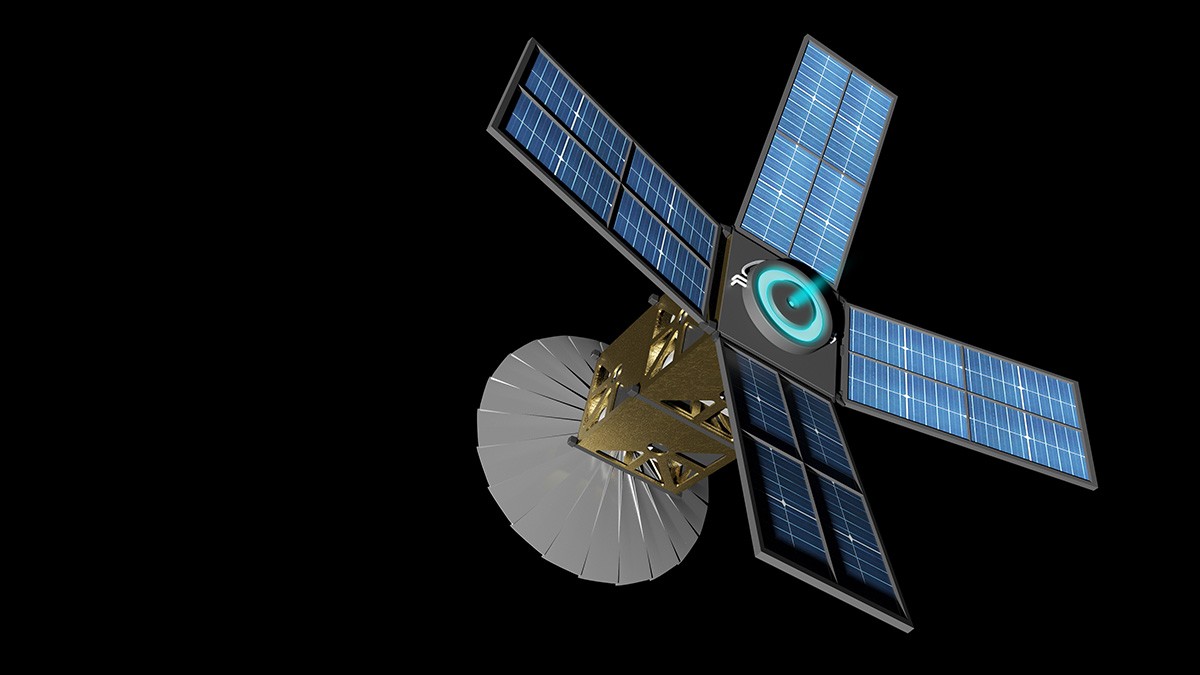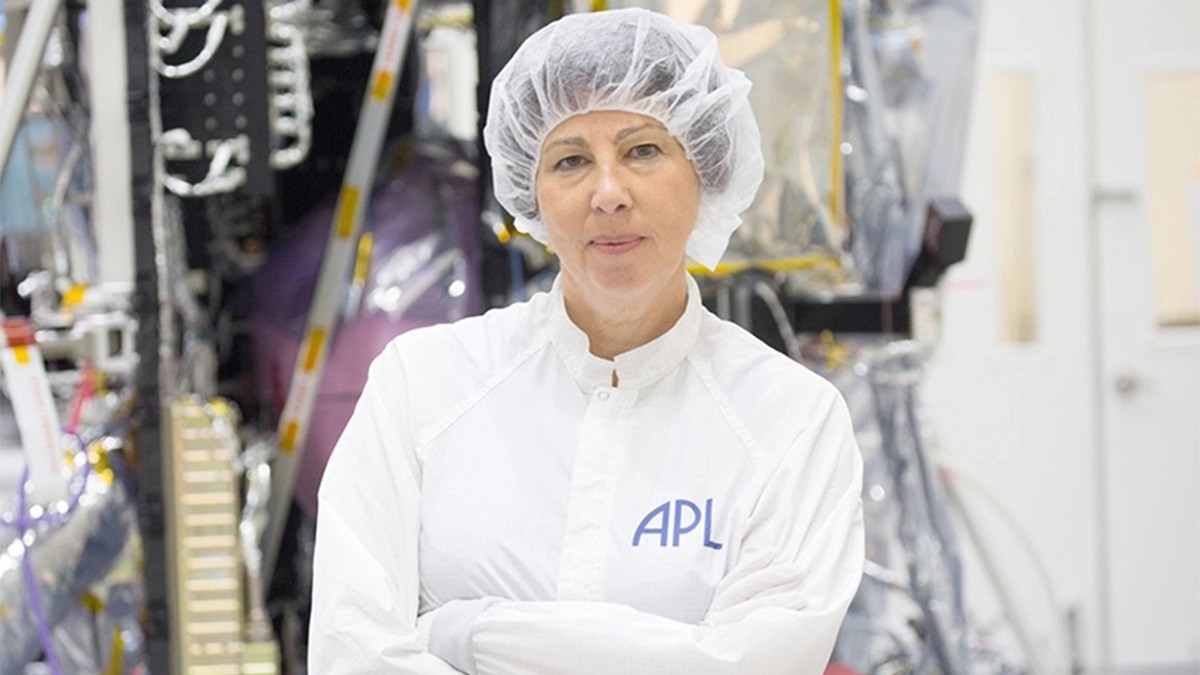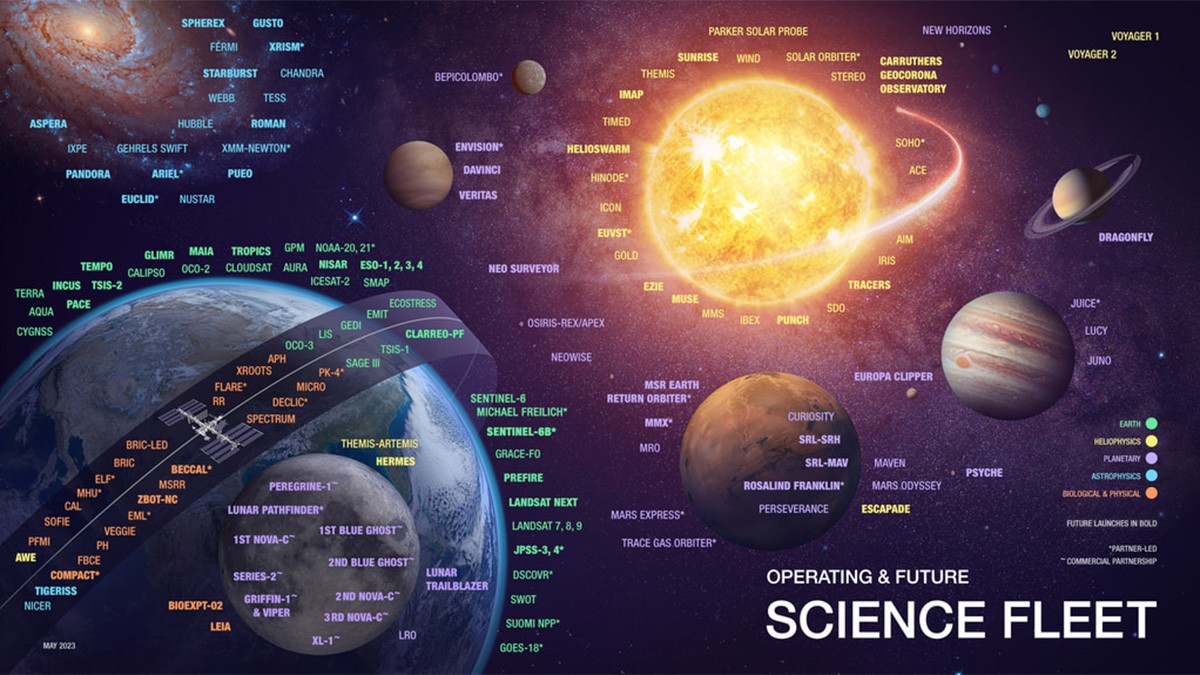Full-length Q&A with Dr Nicola Fox
Dr Nicola Fox graduated from Surrey with an MSc in Telematics and Satellite Engineering in 1991. She became the Head of the Heliophysics Division at NASA in 2018, then became Associate Administrator for its Science Mission Directorate in 2023. She is the first winner of our Alumni Achievement accolade in the Vice-Chancellor’s Alumni Awards.

"The thing that excites me most is having the ability to talk about all of NASA science," says Nicola
What inspired your journey into science?
I was always fascinated by the whole process of asking questions and conducting experiments to discover answers. The scientific method was something that I always enjoyed.
My dad inspired my interest in space. He thought it was such a fascinating subject. We’d often be outside at night and he’d look up at the Moon and say, “Imagine what it would be like to walk on there and look back at Earth…” He’d also add, “I can’t imagine anything better than working for NASA. It must be so exciting!”
When I was a teenager, he went on a business trip to America. He went to the effort of visiting the Kennedy Space Center, and he bought me a NASA hat and a bunch of postcards. I still have the hat. It’s a treasured possession.
Why did you study at Surrey?
I was inspired to come to Surrey because at the time they were the only UK university to have ever launched anything into space. They also had CubeSats, or cube satellites to give them their proper name, that they were building on campus.
Before I decided to come, I asked if I could see a CubeSat in the laboratory. It was exciting to be that close to something that was going into space. I was also amazed at how small they were.
Intellectually, you can know how big a CubeSat is. But until you see one, you don’t realise how tiny they actually are. And there’s a huge amount of engineering fitted into this tiny spacecraft about the size of a football.
Who were your tutors on the MSc?
Barry Evans was the head of the department at the time. He was the supervisor for my dissertation. Martin Sweeting was in the department, too.
How did you find the MSc?
It was pretty stressful. It was the first year that it went from a two-year to a one-year course, and some of the tutors hadn’t adapted their material to take this into account. Some of them would teach the course and run out of class time about halfway through. Then they’d say, “The rest of it’s in the course book. Read it yourselves…”
The positive aspect of this was that it taught me a lot about how to study independently. That was valuable preparation for undertaking my PhD. At that level, you have to continually motivate yourself and do your own research because you’re studying something that nobody else knows.
It was also the first time I’d really worked in a team. There was so much to do that we all helped one another. We formed a nice little study group.
What were your key learnings?

"At Surrey, I asked if I could see a CubeSat in the laboratory. It was exciting to be that close to something that was going into space," recalls Nicola
We took a course in artificial intelligence (AI), which was a new subject then. One project saw us tasked with creating a machine learning tool to plot a route through the London Underground. The difficult aspect of this involved the Circle Line because it had no defined end and start points. We created a test code and it worked, then we added in all the stations and it blew the memory. The permutations of going from one place to another became so huge it couldn’t cope.
In the end, we created a mini database to temporarily house the information. But we had to delete the data every time we plotted a route because it couldn’t handle more than one request. Our tutor on this project had gone away on honeymoon for a couple of weeks. When he returned, he couldn’t believe we’d developed a way of solving this problem.
That group thinking to achieve a solution without having somebody who knows the answer in the room was a key lesson. It’s essentially what I do at NASA. Here’s a new problem. How do we solve it?
We get a team together, we involve experts and we discuss the problem, then somebody goes away and finds a solution. We then test the solution to make sure it works.
What’s your happiest memory from Surrey?
One of my key memories is forming friendships with the people that helped me get through the MSc by sharing their knowledge.
Outside the course, I lived in student accommodation and I became friends with a Greek woman who was doing a masters in Greek dance. There was a big Greek community on campus, so I went to a lot of Greek parties with her and I was welcomed into this whole new group. I remember finding out how big a deal a Greek Easter is. I recall being presented with vast amounts of food, which just kept arriving.
Can you tell me about landing your first role at NASA?
It was bit fortuitous. I went to Imperial to study my PhD and I attended a research conference in Alaska. I’d made a poster presentation about my project and I was standing in front of my display enthusiastically talking to people for a few hours.
I noticed a scientist observing me. He eventually introduced himself and he asked me if I was interested in applying for a postdoctoral position at NASA. I didn’t even know it was an option at the time. I didn’t know English people could apply for such roles. I mean, NASA was this shiny institution in another country. I hadn’t even considered leaving the UK.
But I obviously said “Yes” and he sent me the application details. I had to write a detailed research proposal and it was accepted. I moved to America to work at the Goddard Space Flight Center in 1995.
It remains one of the bravest decisions I’ve ever made. I knew the guy who’d hired me, but I didn’t know anyone else. I moved away from my friends and from the safety net of my family. My mum’s washing machine was no longer just two hours away!
I had to find an apartment, buy furniture and develop a whole new social life. It was a bit daunting.
You left NASA to join John Hopkins University in 1998...

At APL, Nicola was the Chief Project Scientist on the Parker Solar Probe, which gets to within 4 million miles of the surface of the Sun in 2024
I joined the Applied Physics Lab (APL) at John Hopkins. I worked on NASA missions such as the Van Allen probes and the Parker Solar Probe. I started working on IMAP – the Interstellar Mapping and Acceleration Probe – which launches in 2025.
I worked on a lot of mission proposals, too. Some were selected and some weren’t. I worked on the New Horizons flight to Pluto and the Messenger that orbited Mercury. I worked on a concept for a Europa mission as well. It wasn’t selected, but there is a Europa mission launching next year. US Poet laureate Ada Limón wrote a poem dedicated to our Europa-Clipper spacecraft. It’s nice that project has sort of come full circle.
You returned to NASA in 2018. What lured you back?
Thomas Zurbuchen, who was Associate Administrator for the Science Mission Directorate, encouraged me to apply for the role. I’ve always been lucky. I’ve enjoyed every job I’ve had.
At APL, I thought I had the best job in the world because I was the Chief Project Scientist on the Parker Solar Probe. But Thomas encouraged me to step outside my comfort zone and run an entire division at NASA. If he hadn’t asked, I’d never have applied because I was happy where I was. I convinced NASA to let me stay at APL until after the Parker Solar Probe was launched.
Tell me about your work in Heliophysics...
Three weeks after the Parker Solar Probe launched, I began working as Head of the Heliophysics Division. That was in 2018 and it was fabulous. Heliophysics is essentially exploring the behaviour of the Sun and how it influences the Earth and the other planets in our Solar System.
It was daunting at first, but I remember a couple of weeks into the new role, I turned to my deputy and said, “I feel very ‘Director-y’ today!”
Instead of working with one or two missions as I was at APL, I was working with all the missions that were part of the Heliophysics portfolio. It was a big undertaking and we had a huge research community, but we also had to operate with budgetary constraints. The role involved lots of networking, travelling and policy briefings. It was more about enabling the science for your particular community.
I spent a lot of time making sure that missions were on track to be launched, making sure they were sending back the data that we needed, deciding where the data was being shared… It was a big and varied job.
You became Associate Administrator for NASA’s Science Mission Directorate in 2023...
In every previous role, I always thought I had the best job on the planet. As the Associate Administrator (AA), I now have the best job on – and off – the planet. There are six divisions in NASA’s Science Mission Directorate. Alongside Heliophysics, I now have overall responsibility for Planetary Science, Astrophysics, Biological and Physical Sciences, Earth Science, plus a joint agency that looks after the spacecraft for the National Oceanic and Atmospheric Administration.
We have an annual budget of about $8 billion. So spending that responsibly and ensuring all the missions get what they need to be successful is demanding.
To give you an idea of scope, we currently have more than 140 missions at various stages. That can mean in space, preparing to launch, still being built or being planned.
We’ve had three Earth science launches in the last couple of months and we have several other Planetary Science things coming up that are exciting. So our OSIRIS-REx mission will return to Earth and deliver samples from an asteroid on 24 September. I’ll be out in the desert in Utah waiting for the capsule to land. It’s coming back to Earth with precious samples of an asteroid called Bennu.
Continuing the excitement of asteroids, on 5 October the launch window opens for our Psyche mission, which is going to a metal-rich asteroid. I refer to that as “NASA’s first heavy metal mission”.
We also have a big year coming up in Heliophysics. In October, we have an annular solar eclipse that’s visible in the US, then a total solar eclipse in April 2024. In the same year, the Parker Solar Probe will get to within 4 million miles of the surface of the Sun.
In Astrophysics, we also have launches coming up. These include a joint mission with ESA called Euclid, which is designed to explore the composition and evolution of the dark Universe; and XRISM (X-ray Imaging and Spectroscopy Mission), which is a JAXA/NASA collaborative mission with ESA participation. It will investigate the X-ray sky using high-resolution spectroscopy and imaging.
In Earth Sciences, we have our first joint mission with India, NISAR (NASA-ISRO Synthetic Aperature Radar), which uses advanced radar imaging to provide an unprecedented, detailed view of Earth. There’s so much going on.
It does sound like “the best job on – and off – the planet”…
It is. The wonderful thing about being the AA is that I get to work with world-class teams who are dedicated to their various communities. They do the key job of implementing the science and enabling their wider communities to conduct the experiments.
I genuinely love the role. I get in early every morning and the security guard always says, “Have a great day!” and I always think, “I absolutely will!” Most days, I still have those moments where I suddenly realise, ”This is amazing. I’m working at NASA! It’s so cool!”
Before becoming the AA, I couldn’t go into the sort of exacting details about all the 140+ missions that I could do with Heliophysics. But I was always fascinated by everything we do.
I can now tell you, with probably the same amount of detail as the missions from the Heliophysics Division, about most of the Planetary Science and Astrophysics missions. I’m getting up to speed with everything that is happening in Earth Science, and Biological and Physical Sciences is really interesting.
We’re looking at what experiments we want to carry out on the International Space Station, what we’ll be able to do on the surface of the Moon where we operate in an environment that has one sixth of the gravity of Earth and what we put inside the crew capsules as we were return people to the Moon.
We also put experiments inside the Orion capsule that launched with Artemis One last November. These were looking at how yeast, seeds, algae and fungi responded to different stimuli in space. That’s a whole new area for me that’s exciting. For example, what does radiation do to the human body in space?
What excites you most about the role?

"As the Associate Administrator, I have the best job on – and off – the planet," says Nicola, who's excited by the vast scope of her new role
Interesting science always happens on boundaries. If you look at a planet and how it’s responding to solar wind, it’s the boundary where the two systems meet that is always where the interesting physics takes place.
Extending that idea of what happens on the boundaries where the different disciplines of NASA expertise meet is the exciting thing.
So what happens at the intersection between Planetary Science and Heliophysics? How do planets respond to what’s happening with the Sun. And what can studying the Sun, which is an average star, tell us about stars in other stellar systems? And what can it tell us about the search for life on other planets? And how can we apply that knowledge in Astrophysics?
Closer to home, we have these rapid alterations in terrestrial weather patterns happening on Earth with hurricanes, typhoons and tornados. How does that interact with space weather?
The thing that excites me is having the ability to talk about all of NASA science. And that includes historical missions. For example, we brought rock samples back from the Moon more than 50 years ago. Because our science, technology, equipment and understanding has vastly improved, we’re able to discover new things and we can look at those samples in different ways.
The first time I gave a talk as the AA, I had a chart on this massive screen behind me that had all the missions for the NASA Science Directorate. As the Head of Heliophysics, my Division chart usually had about 30 missions on it. This one had 140+ on it. When I turned around and pointed at it, an excited voice inside my head said, “They’re all mine! It isn’t just the ones around the Sun…”
What advice would you give to students wanting to follow in your footsteps?
The best advice I can give is to enjoy the experience you’re having at the time. If you’re science student doing a PhD, take the time to enjoy your PhD. If this is going to be your piece of research, it’s your contribution to human knowledge. You’re learning something that no one else knows and you’re producing results in something that no one else has thought of before. So take the time to enjoy what you’re doing and be proud of what you do.
Attend as many conferences as you can, too, and always make a poster presentation rather than give a talk. You’ll have more time to interact with people at your poster. Don’t be afraid to discuss what you do and what you want to do because that’s often what gets you a job interview. It may not get you the position, but it will demonstrate you’re enthusiastic and excited about science.
Finally, take advantage of every opportunity that comes your way. If somebody offers you the chance to work on a mission, never think, “I don’t know anything about that…” Take the opportunity and learn about it. I didn’t know much about the Parker Solar Probe when I was asked to become its Chief Project Scientist. But I learned about it quickly.
I even have a necklace with a silver model of the spacecraft that I wear every day. I love all my missions, but this one remains very close to my heart.
What I usually tell schoolkids is, “Close your eyes and dream big. Because if you can’t see it, you’ll never be it.”
How do you feel about being honoured in the Vice-Chancellor’s Alumni Awards?
It was totally unexpected. At the time, I was pleasantly overwhelmed with congratulatory emails and letters when I got the Associate Administrator role at NASA. It took me a couple of days to go back and read everything properly.
I was shocked and surprised when I fully realised what I’d won. I had that moment of, “I must be reading this wrong!” But it’s lovely to get the award and to be recognised in this way.